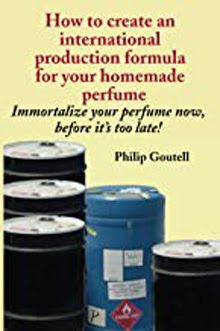
Creating a new perfume is about having a vision. But to recognize your vision, skills are required. So if you want to create the fragrance of your dreams, you first need to learn how to "match" a fragrance -- creating a physical representation of your mental or nasal vision.
Matching has long been part of the perfumer's training. After learning how to recognize the smell of basic perfumery raw materials, the perfumer trainee begins to put them together. Trying to recreate a classic fragrance by this matching process is a standard training event. For example, you have a bottle of real Chanel No.5 and you have, in front of you, a row of bottles of aroma materials that are not Chanel No.5. Your challenge is to construct "your" version of No.5 using these aroma materials.
Young perfumers have been doing this for generations. The purpose is not to reinvent Chanel No.5 but rather to (1) learn something about the structure of classic fragrances and (2) to develop your technical skills at transforming a mental or sensual "image" into a physical product -- your own new perfume.
When I first started working with the PerfumersWorld Foundation Course I don't believe I had ever heard of Edmond Roudnitska. When I mixed the simple formulas presented by the PerfumersWorld course, "muguet haute couture" or "classic muguet" didn't mean any more to me than the experience of taking five of the 25 bottles in front of me and mixing 25 drops of this with 10 drops of that, etc. After stirring them for a minute or so, they were left overnight. In the morning I was treated to the wonderful fragrance of "classic muguet."

In time I learned that the concept of "classic muguet" derived largely from perfumer Edmond Roudnitska's Diorissimo (created for Christian Dior) and itself inspired in part by Henri Robert's Muguet de Bois (created for Coty). In time I was able to obtain an older bottle of Diorissimo. This gave me an opportunity to compare the "classic muguet" that I had mixed with the "real" classic muguet -- Roudnitska's Diorissimo. The initial impression was certainly that of a good match!
Don't get me wrong . What I had mixed was certainly no substitute for Roudnitska's creation, one of the most beautiful fragrances ever. In the first place, Roudnitska's CONCEPT was original; my mixture was simply a crude copy of that concept. Roudnitska's materials were richer, more costly; mine were more simple, more affordable, more synthetic. Roudnitska's perfume has all those wonderful qualities of a great perfume -- radiance, tenacity, subtlety, depth. Mine mixture achieved the outline, not the substance. But for me this was an excellent training exercise (even though the formula had been given to me!)
The "classic muguet" formula in the PerfumersWorld Foundation Course was not my creation. I use if only as an example of fragrance matching -- a skill at which I am still just a beginner.
But the road to learning how to actualize your fragrance visions begins with working with perfumery materials -- conducting directed experiments rather than just random mixing. The more you try your hand at matching either an existing perfume or a perfume that exists only in your imagination, the more skilled you become at working with perfumery materials, and the more you begin to appreciate subtle differences between one fragrance or aroma material and another.
Success in perfumery requires discipline and working at matching, over and over again, first to get the right materials and then to get the right balance of those materials.
The more you work at it, the better you become. And, as you become better and better at it, those dreams of a great perfume you have imagined become better and better realized in your own compositions.


No comments:
Post a Comment